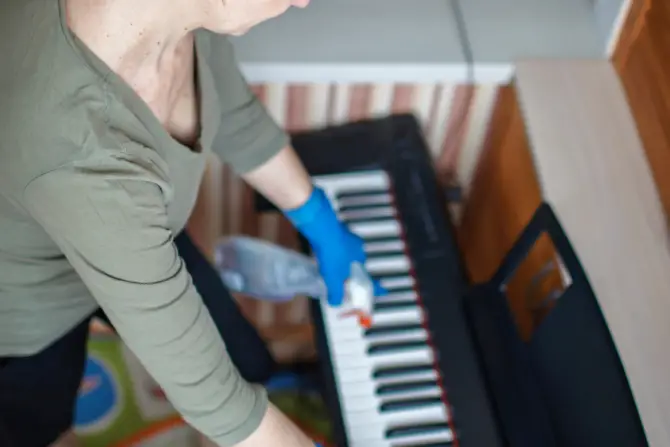
When you get a new piano, it looks all nice and white and clean – and if you’re like most people, you want to keep it that way!
Table of Contents
- What to Clean Piano Keyboard Keys with
- How to Clean Piano Keyboard Keys
- How to Clean the Inside of a Piano Keyboard
- How to Clean Under the Piano Keyboard Keys
- How to Clean the Speaker Grill of Your Piano Keyboard
- How to Keep Your Piano Keyboard Clean
- What to Use to Clean Piano Keyboard
- How to Clean Dust from a Keyboard Piano
- Why Do Piano Keys Turn Yellow?
- How Do I Get my Piano Keys White Again?
- Video Tutorials on Cleaning Your Piano Keyboard
- Wrapping Up
Well, it’s not that hard to do so, but you need to be regular about it and use the right materials.
In this article we’ll walk you through everything you need to do to clean the individual elements of your piano keyboard.
What to Clean Piano Keyboard Keys with
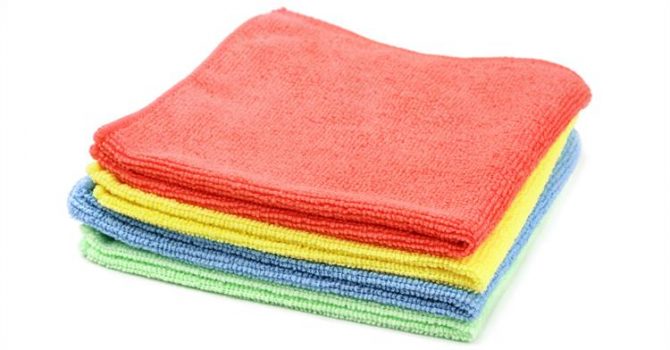
In order to clean your piano keys, you will need a soft cloth (preferably microfiber), mild liquid soap and water. If you don’t have a cloth, you can make use of an old t-shirt instead.
You will also need an empty spray bottle- make sure it doesn’t have any chemical or solvent residue left in it. Fill the spray bottle with water and add a little liquid soap to it. Give it a good shake and you’re ready to start cleaning.
How to Clean Piano Keyboard Keys
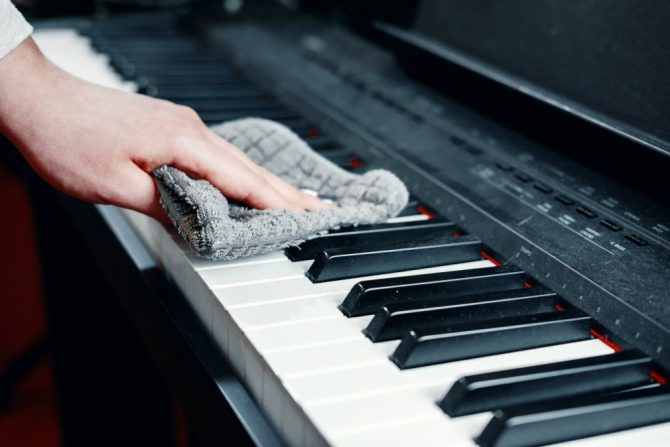
Do not spray the soap mix directly onto the piano. Instead, spray it onto the cloth until it is damp. Start at one end of the keyboard and work on a few keys at a time. Slide the cloth over the keys in a front and back motion and apply just a little bit of pressure. You might need to repeat this step a few times if the keys are sticky.
Don’t wipe across the keyboard horizontally since this will cause any dirt or grit to get stuck between the keys. You don’t want to end up with sticky keys that won’t budge when you’re trying to play.
Continue cleaning the rest of the keys until you reach the end of the keyboard. Both the white and black keys will be cleaned this way. Just make sure that no dirt gets pushed into the edges of the black keys.
The next step is to clean the front square area of the keys. Use the same soft cloth dampened with soap and slide it upwards on each individual key. This will remove the dirt upwards and onto your cloth. Again, don’t slide the cloth across the keys since this can also lead to sticky keys. Once you finish with all the front ends, you’re done.
Ideally, you should repeat this cleaning method once or twice a week (depending on how frequently the instrument is used). If you get a lot of dust in your house, you can always use a soft dry cloth (or a feather duster) to brush off the excess dirt from the keys. Both digital and portable keyboards can be cleaned in this way.
What to Keep an Eye Out for
There are certain scenarios where the material of your keys, etc., will need special care:
- If your piano has ivory keys instead of plastic ones, it is better to use a light-colored cloth to avoid any discoloration of the keys. Ivory is porous and has the capability to absorb sharp colored dyes. The method using the soap and soft cloth will remain the same.
- You also need to know the material of the black keys- are they made of black wood, plastic, or have been painted black? If they are painted, they might start bleeding color if they are cleaned with a damp cloth. Generally, this is a problem with older pianos so just test the method on one spot. If the color remains the same, you’re good to go.
How to Clean the Inside of a Piano Keyboard
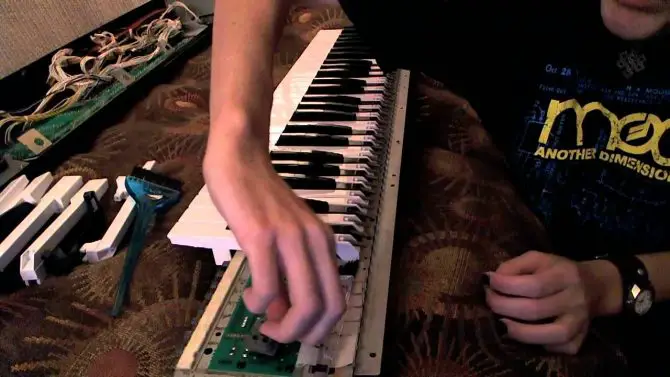
For larger spaces, you can simply dust the inside with the help of a feather duster. For the smaller spaces, again, yes, just use a soft, microfiber cloth and it’ll get rid of any dust that may have gathered inside your piano keyboard.
How to Clean Under the Piano Keyboard Keys
There is something known as an under appliance duster that is thin enough to fit under the keys of your piano and clean any dust and dirt out from under them.
If you can’t get your hands on this, you can use a soft cloth and push it under the keys with the help of a flat ruler. Just be very careful that you don’t chip anything as you clean. Make sure that the cloth is completely dry since any moisture left underneath can completely destroy your instrument.
How to Clean the Speaker Grill of Your Piano Keyboard
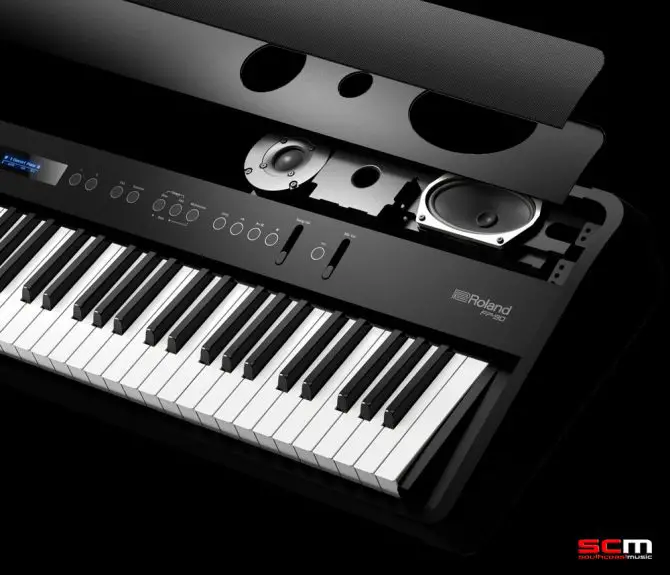
You can clean the speaker grill with the same under appliance duster, or brush off any dirt with a feather duster. Don’t try to apply too much pressure to remove dirt from between the speaker grills as this can damage the sound quality of the instrument.
How to Keep Your Piano Keyboard Clean
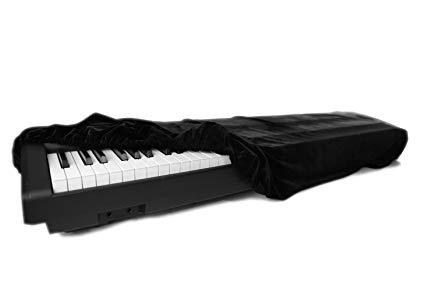
In order to avoid situations where you’re trying to scrub off something sticky from your keyboard, you need to take some safety precautions:
Wash and dry your hands properly with soap before you play. Playing with dirty or oily fingers is a surefire way of dirtying the piano keys.
Keep the piano in a location that protects it from the elements. This includes keeping it away from sunlight, extreme humidity and very hot or cold environments. These can discolor your keys and reduce the life of your instrument. Ideally, a piano should be kept in a temperature and humidity controlled room that isn’t exposed to too much sunlight.
If you plan on keeping a light or metronome on the piano, keep a felt base underneath to avoid scratching the surface. Don’t put any liquids or food items on the piano. Most importantly, keep any vinyl or rubber items away from your piano.
Keep the piano lid down when it is not in use to keep it safe from sunlight, spillages and anything else.
What to Use to Clean Piano Keyboard
Be careful not to use anything rough or any strong chemicals to clean your piano. Even applying too much pressure with a soft cloth can damage the surface of the keys, so be very careful. Only use a soft cloth (one with microfibers) and a mild soap that has been diluted with water. Some people even use hand soap since it is very gentle and doesn’t contain any harsh chemicals. You can even find solvents designed specially to clean pianos.
How to Clean Dust from a Keyboard Piano
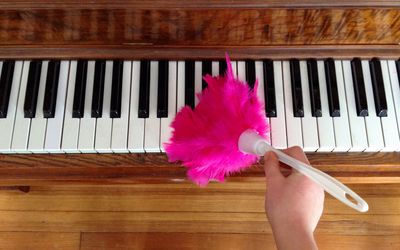
You can use a feather duster to lightly dust the surface of the keyboard. Alternatively, you can use a soft cloth and gently rub it over the keys without getting any of the dust inside the spaces between the keys.
Why Do Piano Keys Turn Yellow?

Over time, piano keys start to lose their natural whiteness and turn slightly yellow. This may be due to the accumulation of dust, but is mostly caused when the white paint of the keys oxidizes due to constantly being exposed to the air. However, you can restore their original color.
How Do I Get my Piano Keys White Again?
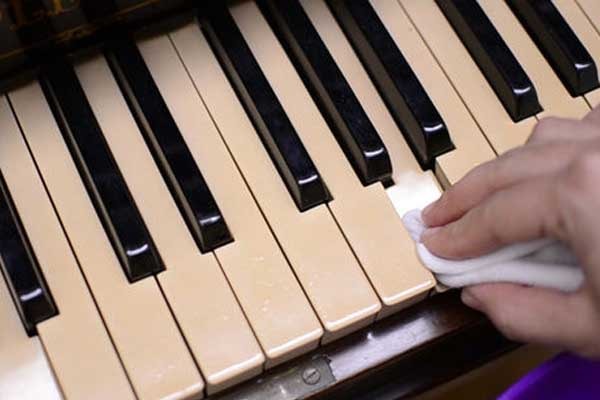
You can restore the original whiteness of piano keys with some basic household items:
Vinegar
Mix about 2 cups of water around half a cup of vinegar. Dampen a soft cloth slightly with this mix and gently rub it on the piano keys. Once you’re done, go over the keys with a dry cloth to get rid of any vinegar residue (since it can damage the keys due to prolonged contact). If your keyboard is dusty, clean that off using the method described above before whitening the keys.
Toothpaste
Ideally, the toothpaste you use for this should contain baking soda. Put some toothpaste on a toothbrush and rub it gently onto the keys (the brush should have soft bristles). Repeat every week and your keys will resume their original color.
Video Tutorials on Cleaning Your Piano Keyboard
Here are some visual guides to make your cleaning job easier:
A basic guide:
Cleaning different types of pianos:
Cleaning the piano key tops:
Cleaning ivory keys:
Wrapping Up
Keep your piano keyboard safe from the elements and avoid eating or drinking near the piano or while you play. Apart from cleaning your piano if something falls on it or the keys become too yellow, you should ideally clean it routinely. Remove dust with a feather duster every day if necessary and use the damp cloth method at least once or twice a week. With the right precautions, your keyboard will stay in good shape for many years.
